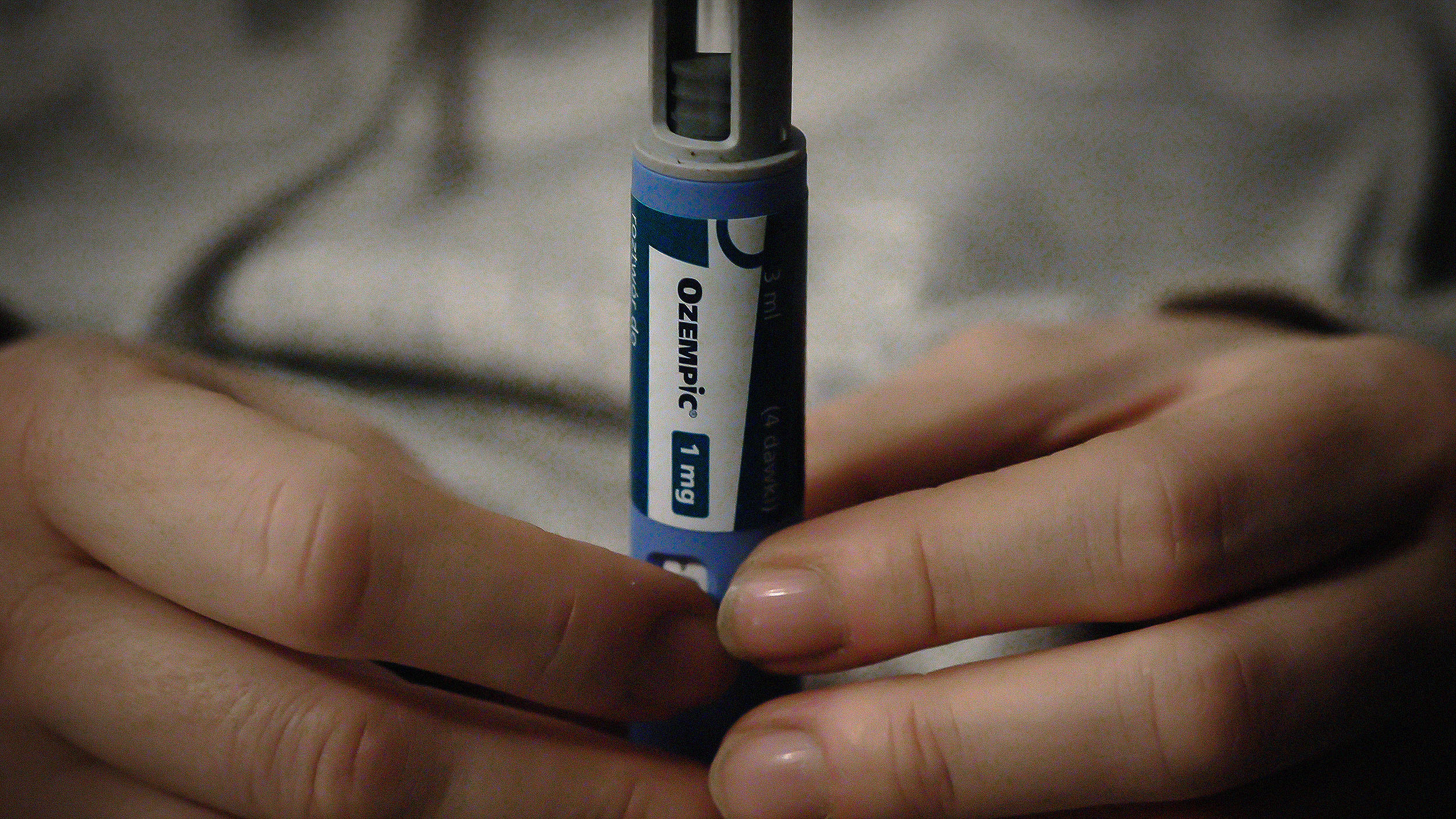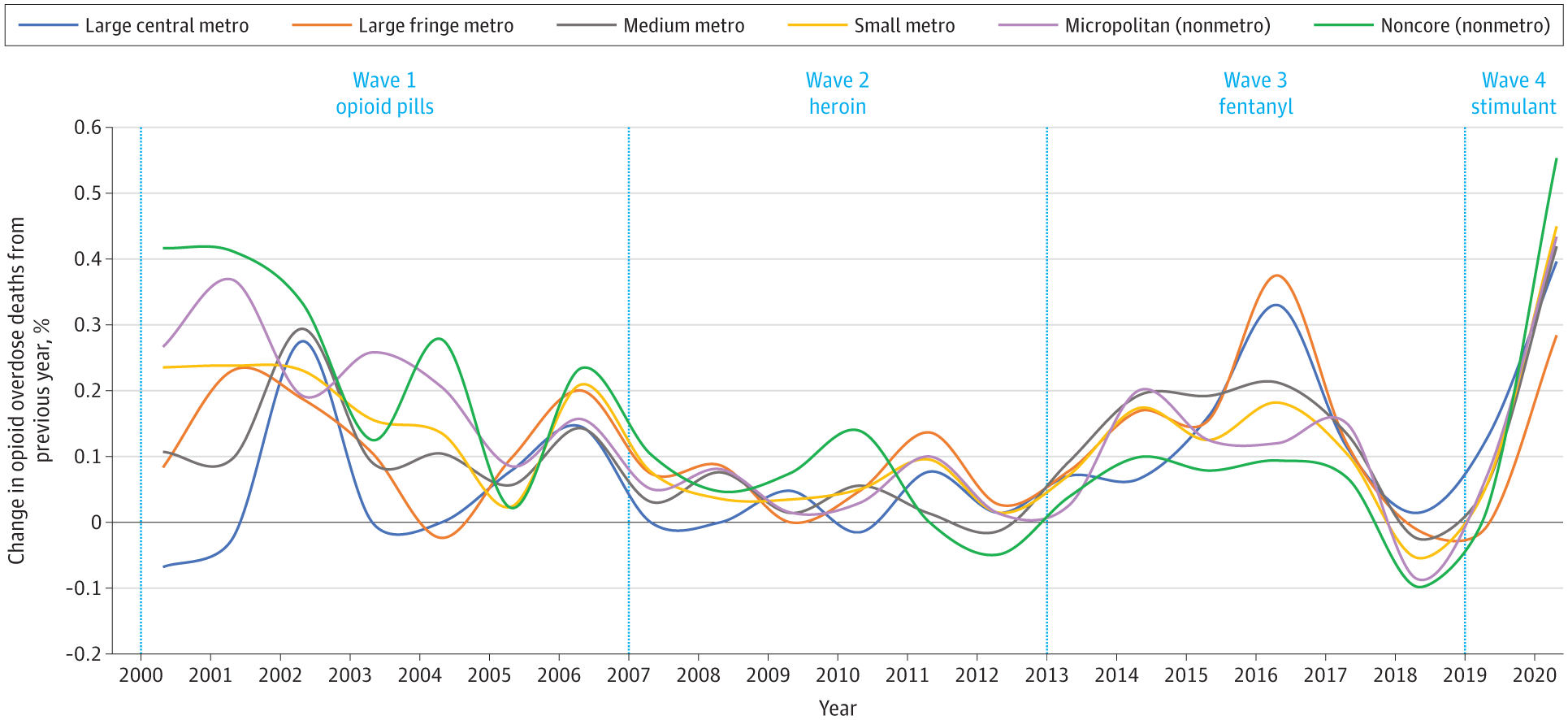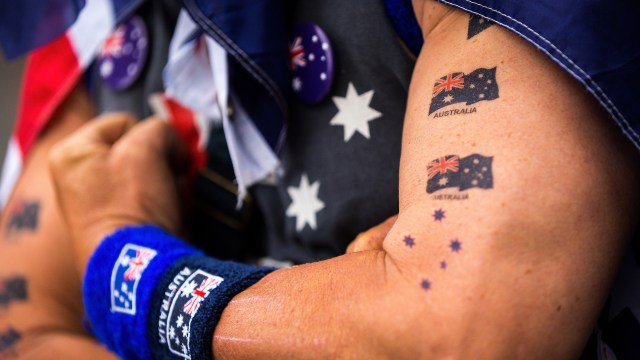Opioid crisis: Johnson & Johnson ordered to pay $572 million

John Moore / Staff
- Johnson & Johnson has been ordered to pay the state of Oklahoma $572 million for downplaying the dangers and overselling the benefits of opioids.
- The state’s lawyers argued that Johnson & Johnson had violated a public nuisance law, which concerns injuries to public health.
- The first federal trial in the opioid crisis is scheduled for October. It’s likely that the Oklahoma verdict doesn’t help drug manufacturers and distributors.
An Oklahoma state court judge has ordered Johnson & Johnson to pay the state $572 million for misleading Oklahomans about the dangers and benefits of opioids, marking the end of the first civil trial against a drug manufacturer involved in the opioid crisis. Although $572 million is far less than the $17 billion prosecutors had sought, the verdict was likely bad news for the nation’s other drug distributors and manufacturers.
The state managed to persuade Judge Thad Balkman of Cleveland County that Johnson & Johnson had violated the state’s “public nuisance” statute, which generally refer to injuries to public health. But Johnson & Johnson said the verdict was a “radical” interpretation of public nuisance law.
“The decision in this case is flawed. The State failed to present evidence that the company’s products or actions caused a public nuisance in Oklahoma,” it said. “This judgement is a misapplication of public nuisance law that has already been rejected by judges in other states.”
Oklahoma does have a particularly broad public nuisance statute, and unlike, say, the tobacco industry, it’s worth noting that Johnson & Johnson was making a product that served a medical purpose. (Johnson & Johnson, by the way, supplied about 60 percent of the opiate ingredients that drug companies use to make painkilling drugs, and one of its subsidiaries made its own opioids.)
“Johnson & Johnson, in some ways, is right to raise the question: If we’re going to apply public nuisance to us, under these circumstances, what are the limits?” University of Georgia law professor Elizabeth Burch told Kaiser Health News. “If the judge or an appellate court sides with the state, they are going to have to write a very specific ruling on why public nuisance applies to this case.”
Balkman wrote in his ruling that Johnson & Johnson promoted “false, misleading, and dangerous marketing campaigns” that “caused exponentially increasing rates of addiction, overdose deaths” and harm to babies born exposed to opioids. The state noted that Johnson & Johnson sales staff made about 150,000 visits to Oklahoma doctors, many of whom were known as high-volume prescribers.
“We’ve shown that J & J was at the root cause of this opioid crisis,” said Brad Beckworth, the lead attorney for the state. “It made billions of dollars from it over a 20-year period. They’ve always denied responsibility and yet at the same time they say they want to make a difference in solving this problem. So do the right thing: Come in here, pay the judgment.
It’s hard to say which side came out on top, exactly. Oklahoma was seeking $17 billion, which the state said would have gone toward addiction treatment, drug courts and other services to remediate the impacts of the opioid crisis, which lawyers said had killed about 6,000 Oklahomans since 2000. The fact that Johnson & Johnson has been ordered to pay about 30 times less than the $17 billion target can be seen as a victory for the drug manufacturer, whose shares rose on Tuesday.
“The expectation was this was going to be a $1.5 billion to $2 billion fine,” Jared Holz, healthcare strategist for Jefferies & Co., told Reuters. “$572 million is a much lower number than had been feared.”
Johnson & Johnson said it plans to appeal the verdict, suggesting it’s a case the U.S. Supreme Court would be interested in hearing.
What’s next on the legal side of the opioid crisis?
The verdict in Oklahoma could help to shape the outcome of the first federal trial in the opioid crisis, which is scheduled for October in Cleveland, Ohio. That federal lawsuit – brought by two Ohio counties against multiple drug manufacturers and distributors – represents more than 1,500 individual cases rolled into one. It alleges that drug companies didn’t follow a federal requirement that prohibits shipping painkillers when orders are deemed suspicious. Unlike the Oklahoma case, the federal trial will be decided by a jury.
The Ohio trial will serve as a bellwether for the nation’s other opioid cases: If the jury rules in favor of the plaintiffs, it will likely put even more pressure on drug companies to engage in settlement talks. It could also encourage more cities and counties to file lawsuits, as Oklahoma Attorney General Mike Hunter suggested they do.
“I hope it’s a template for those trying to seek redress for their clients, cities, counties and states,” he said, adding that the verdict “clearly establishes their culpability.”
But there’s one problem with using the recent case as an exact template: Public nuisance laws vary by state, and considering Oklahoma’s is especially broad, it’s unclear how other states would rule. Still, one thing seems for sure, as David Maris, an analyst at Wells Fargo & Co. who covers the pharmaceutical industry, told The Wall Street Journal:
“There’s no manufacturer that’s high-fiving their lawyers after today.”





